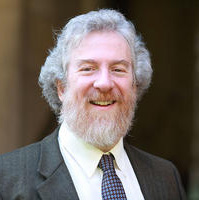“Fill Our Eyes with Light . . . Cause Our Heart to Cling” (Part 2)

Last week we looked at the phrase “ha’er eyenynu” (Fill our eyes with the light of Your Torah), and now let us look more closely at the continuation of the same sentence: “vedabek libeinu bemitzvotekha” (and make our hearts cleave to Your mitzvot) [Siddur Sim Shalom Daily, 32].
The Hebrew root D-B-K (to cleave) brings powerful connections; in the second narrative of Creation, the Man (Adam) says of the Woman, “This one at last, bone of my bones, flesh of my flesh . . . Therefore a man leaves father and mother to cleave [vedavak]to his wife” (Gen. 2:23–24).
Further, at the end of Torah portion Netzavim (Deut. 30:19–20), Moses offers the most transcendent articulation of the values and purpose of the Covenant: “I call heaven and earth to witness today, that I have set life and death . . . before you this day . . . Choose life! . . . By loving Adonai, your God, to hear God’s voice and to cleave [uledavkah] to God.”
The Torah uses the word cleave for the most profound relationships: human marriage and the relationship between a person and God.
At this moment, just before the Shema’, the text of this prayer invites us to ask God to bring us into that relationship. Intimate relationships are not built overnight or easily, whether with God or a human partner. Wishing and asking, even praying can be the starting point, but only the starting point of a lifelong quest. The words of the siddur serve for many as a source of inspiration—and even more so when set to the diverse musical traditions of our People.
Hasidic teachings developed the concept of dveykut (cleaving) as a goal for each person to attain to the limit of his or her capacity. In addition to the standard liturgy, varied meditative and contemplative practices are developed to guide and support each person in his or her quest. These teachings identify each person’s soul as containing within it a divine element that longs to (re)unite with the Divine Source—a goal brought to fruition as dveykut is attained, even momentarily.
For some it is the pathway of mitzvot (commandments) that build the bridge to dveykut. As we fulfill the mitzvot, putting on tefillin, sanctifying Shabbat and Holy Days, visiting the sick and supporting those in need, we align ourselves with God’s will, and draw closer to the Divine—both the Divine within us, and the Divine transcendent.
There are many paths, but ultimately, one goal.
There are special melodies within the Hasidic tradition known as dveykut niggunim, described by Velvel Pasternak (the great scholar and publisher of Jewish music) as “a slow and rapturous melody, invariably sung in a minor key. Chassidim often chanted dveykut while studying.”



